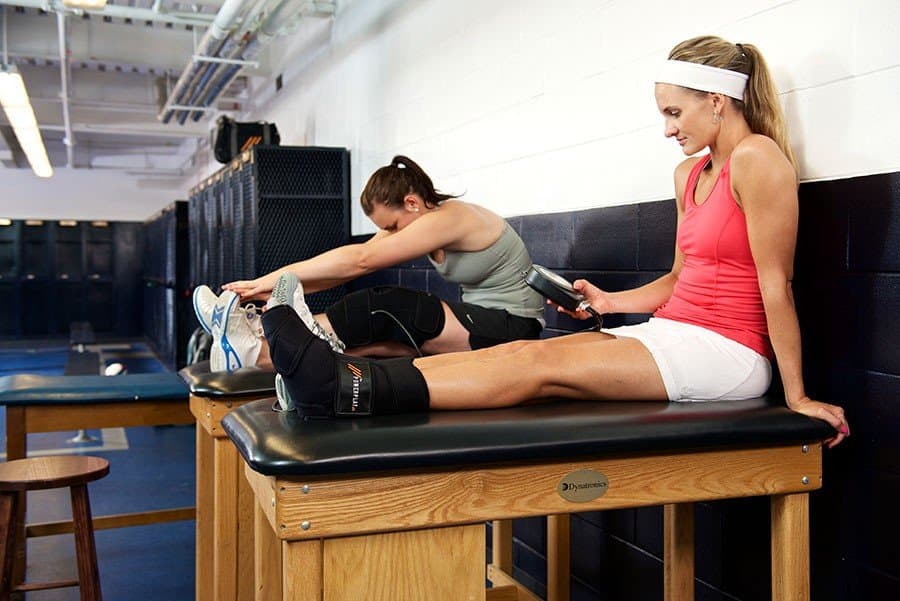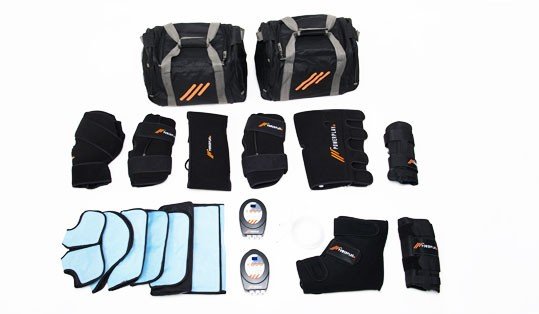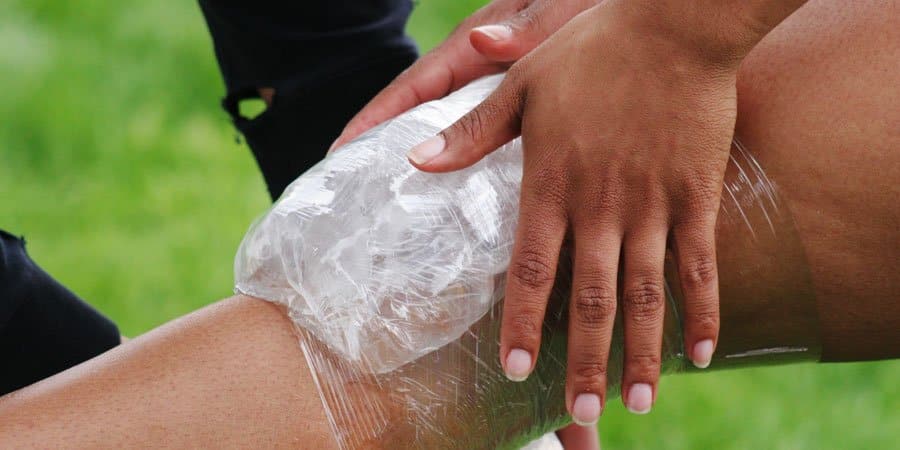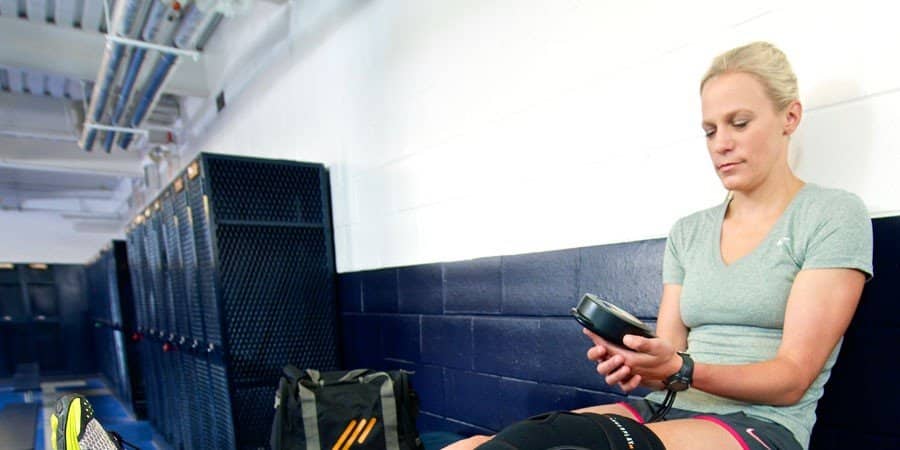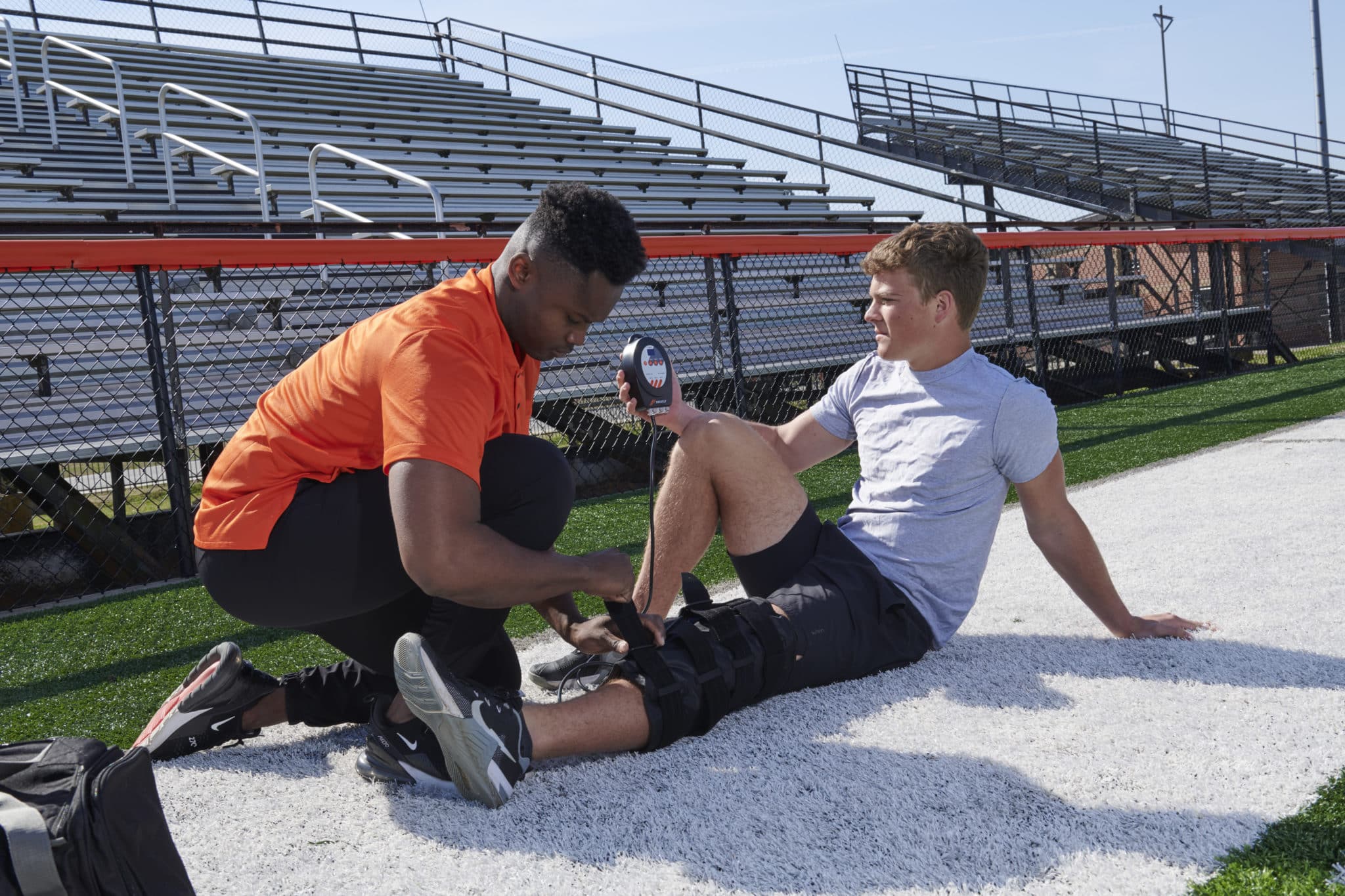According to the U.S. Consumer Product Safety Commission’s National Electronic Injury Surveillance System (NEISS), in 2012, more than 1.9 million people experienced a sports-related injury that was treated in an emergency department. Among individuals over the age of 25, the sports that experience the highest rates include:
- Bicycling – 126.5 per 100,000 individuals
- Basketball – 61.2 per 100,000 individuals
- Baseball and softball – 41.3 per 100,000 individuals
- Football – 25.2 per 100,000 individuals
- Soccer – 23.8 per 100,000 individuals
As an Athletic Trainer with Michigan Hand and Sport Rehabilitation, Mike Perkins, ATC, CES, PES sees athletes at all stages of sports injury and surgery recovery. Perkins and his co-workers—a physical therapist and PT assistant—treat athletes in all sports who come to them after suffering an athletic injury. At Perkins’ clinic, most patients receive physical therapy twice a week, for an hour each session, which aids in the recovery process; with most surgeries, it is common for Perkins to see inflammation, swelling, loss of range-of-motion and loss of strength.
Those post-op challenges are expected; a major challenge, Perkins says, is educating patients about how to take care of their injury when not in therapy to make sure they continue to heal properly. “Some patients put too much weight on a surgically repaired knee or ankle too early in recovery, or try moving their shoulder or elbow, causing them to backslide, increasing inflammation and producing pain and swelling,” observes Perkins. “Thankfully, we now have a tool to help keep post-op and injury complications to a minimum and promote proper recovery. The PowerPlay is as easy to use as an ice pack, but is entirely more effective.”
PowerPlay is a one-pound, portable cold and compression therapy system for the patients recovering on the road or at home. PowerPlay’s three ports each offer both cold and intermittent, sequential compression for joints and muscle relief. “As clinicians, we try to manage symptoms in the clinic,” says Perkins. “Patients look to us for recommendations and expertise on how to recover quickly from their surgery or injury. The therapists I work with love PowerPlay because it’s easy to use, and it’s effective in decreasing pain and swelling.”
POWERPLAY FULLY REIMBURSABLE
Perkins calls PowerPlay a great asset to his clinic, which mainly sees post-surgical injuries for the knee, shoulder, ankle, hip and elbow. Most patients receive ice as one treatment modality to reduce swelling, pain and discomfort associated with their injury, though most insurance companies do not reimburse for the use of ice or cold therapy, and are not generally billable. Perkins says PowerPlay is different. “PowerPlay is a vasopneumatic compression device, which falls under CPT code 97016. That CPT code is fully reimbursable by all insurance companies, including Medicare.”
Perkins’ clinic typically receives reimbursement for each 20-minute treatment with PowerPlay, and now uses PowerPlay for the majority of the clinic’s patients. Perkins adds that while physical therapy clinics benefit from a product that is reimbursable by most insurance companies, PowerPlay is also inexpensive to purchase for clinic use.
POWERPLAY SUCCESS STORY
Perkins shares the story of one patient in particular whose experience with PowerPlay has changed her recovery process dramatically. “This patient has been dealing with a shoulder injury for eight months. After trying physical therapy at another clinic, and after treatment from a surgeon, she was not getting the results she wanted. The patient’s shoulder was so painful she could not lift her arm in front of her or put her hair in a ponytail. Using ice to treat the pain was painful in itself; she was unable to use ice for longer than five minutes at a time.
Perkins continues, “After starting therapy at our clinic, this patient immediately started seeing results. We discussed adding the PowerPlay to her regimen, and we convinced her to try it; we assured her that by using PowerPlay, her exercises would help with any inflammation or swelling, and that PowerPlay’s vasopneumatic compression properties would actually feel more like massage on her shoulder. Fast-forward six weeks: our patient can now lift her arm over her head; she can open doors; and she can put her hair into a ponytail easily. She has her own PowerPlay with a shoulder wrap to use at home if she feels any aches or pains associated with returning to full function! When we are able to help patients like her, it’s extremely gratifying.”
CLINICS’ CRITICAL ROLE
Perkins says the PT clinic in particular plays a critical role in their patients’ recovery. “Patients attend physical therapy to heal from their injury; they know if they do nothing at all, they won’t heal as quickly or as completely. We find that when patients see and feel the results of using PowerPlay, they are hooked. But if their therapist doesn’t recommend it, patients will not realize the benefits of using PowerPlay over ice.”
At first, Perkins says, some physical therapists hesitate to incorporate new treatments into patient care. “As clinicians, we tend to get comfortable in the methods we treat our patients. Our busy schedules and the time it takes to work with a patient make many of us reluctant to take on a new modality setup or seek out training in a new approach to what we are already doing that works just fine. We are a very busy clinic, and typically treat more than 40 patients a day. Our team believes the total treatment received by our patients lasts longer and the patient recovers more quickly when PowerPlay is used in their rehabilitation.”
